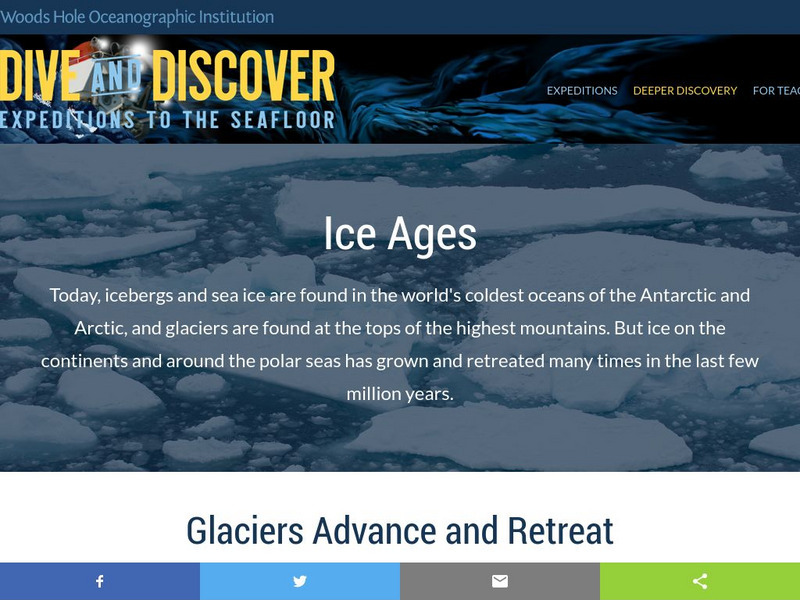Curated OER
Is It Hot in the Light?
Third graders make observations about the temperature of items in direct sunlight. In groups, they discuss why asphalt, brick and cement are warmer than items surrounding them. To end the lesson, they examine how heat transfers energy...
Curated OER
The Flat-Out Truth
In this Earth's shape worksheet, students read an article about a gentleman who believes the Earth is flat. Then students complete 5 short answer questions.
Curated OER
The Inuit Style of Film-making
Seventh graders examine the style of Inuit. In this Film lesson, 7th graders research the different ways to create a Hollywood film. Students read various articles on this style of art.
Curated OER
"To Be" Exercises-ESL
In this ESL 'to be' verb worksheet, students fill in blanks in sentences, using either am, is, are, am not, isn't or aren't. A link to additional resources is provided.
Curated OER
Today is Monday Lesson Plan
Students read a book and recite the days of the week in a story. In this lesson about the days of the week, students which become familiar with the parts of the day. Students read Today is Monday, and situate the days of the week on 8...
Curated OER
First Aid
Fifth graders participate in first aid demonstrations. In this first aid lesson plan, the students answer questions and participate in demonstrations focusing on common household first aid conditions. The teacher poses first aid...
Woods Hole Oceanographic Institution
Woods Hole Oceanography Institute: Ice Ages: Glaciers Advance and Retreat
Why have we had ice ages in the past? This resource explores the reasons why the earth's climate has repeatedly changed to create ice ages. A quiz is available to check your understanding.
Story Behind the Science
Story Behind the Science: Ice Ages, an Alien Idea [Pdf]
Article describing the scientific evolution of theories about the ice ages and glaciation. The international efforts of scientists are noted, as well as the influence of societal mores on how long it would generally take for new ideas to...
University Corporation for Atmospheric Research
Ucar: Little Ice Age: Living During the Little Ice Age
Students brainstorm what the living conditions during the period known as the Little Ice Age (1350-1850) might have been like then study information about lifestyles, the economy, crop yields, and human and livestock mortality.
PBS
Pbs: Scientific American Frontiers: Little Ice Age
Did you know there was a global 'Little Ice Age' around the time Columbus sailed across the Atlantic? Climatologists have documented changes in temperature and how countries and people around the world were affected. What caused the LIA?...
Indiana University
Indiana University Bloomington: Comparing Ice Age Mammals [Pdf]
This activity allows learners to compare the morphologies of 3-D printed teeth from Ice Age mammals. Students will manipulate 3-D prints and record observations in order to infer the diet of megafauna and discuss the role of technology...
A&E Television
History.com: How Early Humans Survived the Ice Age
The most recent ice age peaked between 24,000 and 21,000 years ago, when vast ice sheets covered North America and northern Europe, and mountain ranges like Africa's Mt. Kilimanjaro and South America's Andes were encased in glaciers. At...
Other
Denver Museum of Nature and Science: Ice Age
Learn many facts about the Ice Age and the large animals alive in Ice Age North America, such as the muskox, short-faced bear, American lion, and the grounds sloth.
Miami University
The Little Ice Age: Was It Big Enough to Be Global?
This website discusses the devastation caused by the Little Ice Age during the 16th century. Detailed narrative provides a multitude of possible causes for the Little Ice Age.
Indiana University
Indiana University Bloomington: Geo Notes: Indiana During the Great Ice Age [Pdf]
Describes the impact of the Ice Age on Indiana's geology and prehistoric wildlife.
Indiana University
Indiana University Bloomington: Geo Notes: Loess: Product of Ice Age Winds [Pdf]
Explains how loess came to be deposited over much of Indiana by the melting of glaciers during the Ice Age.
Other
Wesleyan University: The Ice Age in Connecticut
A general site about the effects of the Ice Age on Connecticut's landscape; includes a section located in the middle of the page on glacial grooves.
Ducksters
Ducksters: Earth Science for Kids: Ice Ages
Find out facts about the ice age on this site. Kids investigate about the ice ages and Earth sciences including glacial and interglacial periods, major ice ages, interesting facts, and their causes.
Science4Fun
Science4 Fun: Ice Ages
What is an Ice Age? Discusses the five major ice ages and the causes.
Curated OER
Cbc: The Great Human Odyssey: Homo Sapiens: Child of the Ice Age
A fascinating look at where humans came from. The interactive journey begins in Ethiopia over four million years ago with our ancestor, Ardipithecus ramidus. It continues at intervals along a timeline up to the present. The journey is...
University Corporation for Atmospheric Research
Ucar: Little Ice Age: Working With Indirect Evidence of Past Climates
Students explore the differences between direct and indirect evidence to understand how climate has varied through time.
University Corporation for Atmospheric Research
Ucar: Little Ice Age: Blooming Thermometers
In this lesson plan, students develop an understanding of the relationship between natural phenomena, weather, and climate change, the study known as "phenology." In addition, they learn how cultural events are tied to the timing of...
University Corporation for Atmospheric Research
Ucar: Little Ice Age: Dark Skies: Volcanic Contribution to Climate Change
In this activity, students learn how volcanic eruptions affect global climate.
Other
Denver Museum of Nature and Science: Ice Age Giants Coloring Pages [Pdf]
Printable coloring sheets of Ice Age animals, such as the dire wolf, the giant beaver, the American mastodon, and the saber-toothed cat.







![Story Behind the Science: Ice Ages, an Alien Idea [Pdf] Article Story Behind the Science: Ice Ages, an Alien Idea [Pdf] Article](https://d15y2dacu3jp90.cloudfront.net/images/attachment_defaults/resource/large/FPO-knovation.png)


